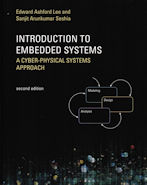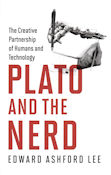In this book, Edward Ashford Lee makes a bold claim:
that the creators of digital technology have a boundless medium for creativity.
Technology has advanced to the point where progress seems limited
not by any physical constraints but only by our human imagination.
Writing for both literate technologists and numerate humanists,
Lee makes a case for engineering—creating technology—as
both an intellectual and a deeply creative process.
Explaining why digital technology has been so transformative and so liberating,
Lee argues that the real power of technology stems
from the way humans are able to partner with it.
Lee explores how engineers use models and abstraction to build
inventive artificial worlds and to give us things that we never dreamed of—for example,
the ability to carry in our pockets everything humans have ever published.
He argues, however, that artificial intelligence’s goal
of reproducing human cognitive functions in computers
vastly underestimates the potential of these machines.
In his view, technology is able to augment our cognitive and physical capabilities
while we nurture, develop, and propagate the systems themselves.
Complementarity is more likely than competition.

